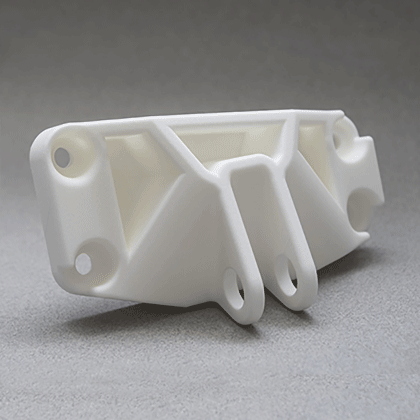Blog Information
- Posted By : Manchester Marks
- Posted On : Apr 12, 2024
- Views : 198
- Category : General
- Description : A Comprehensive Guide to Understanding SLS Rapid Prototyping Technology
Overview
- SLS Rapid Prototyping
When it comes to additive manufacturing, Selective Laser Sintering (SLS) is a cutting-edge technology that has revolutionized the way prototypes and end-use parts are produced. In this comprehensive guide, we will delve into the intricacies of SLS rapid prototyping, exploring its principles, applications, benefits, and future prospects.

The Fundamentals of SLS Rapid Prototyping
SLS rapid prototyping is a process that utilizes a high-powered laser to selectively fuse powdered materials, such as nylon, into a solid 3D structure. The technology operates on the principle of sintering, where the powder particles are heated to the point of fusion without reaching a full melt. This allows for the creation of complex geometries with high precision and accuracy.
One of the key advantages of SLS rapid prototyping is its ability to produce functional prototypes and end-use parts without the need for support structures, as the unsintered powder acts as a self-supporting material during the printing process. This not only saves time and material but also enables the fabrication of intricate designs that would be challenging or impossible to achieve using traditional manufacturing methods.
Applications of SLS Rapid Prototyping
The versatility of SLS rapid prototyping makes it suitable for a wide range of applications across various industries. From aerospace and automotive to healthcare and consumer goods, SLS technology is used to create prototypes, custom components, and production parts with exceptional mechanical properties.
For example, in the aerospace industry, SLS rapid prototyping is employed to manufacture lightweight, high-strength parts for aircraft and spacecraft. The ability to produce complex, lightweight structures with superior strength-to-weight ratios makes SLS an ideal choice for aerospace applications.
The Advantages of SLS Rapid Prototyping
Compared to other additive manufacturing technologies, SLS rapid prototyping offers several distinct advantages. The absence of support structures, the ability to use a wide range of materials, and the production of fully functional parts are just a few of the benefits that make SLS a preferred choice for rapid prototyping and low-volume manufacturing.
Furthermore, SLS technology enables the direct production of end-use parts, eliminating the need for tooling and reducing time-to-market. This is particularly advantageous for companies looking to iterate designs quickly and bring products to market faster.
The Future of SLS Rapid Prototyping
As technology continues to advance, the future of SLS rapid prototyping looks promising. Ongoing research and development efforts are focused on enhancing the speed, resolution, and material options of SLS systems, opening up new possibilities for the manufacturing of complex, functional parts.
Additionally, the integration of SLS with digital design tools and simulation software is expected to streamline the product development process, allowing for rapid iteration and optimization of designs before physical production. This convergence of digital and physical manufacturing is set to redefine the way products are developed and manufactured in the years to come.
In conclusion, sls rapid prototyping is a game-changing technology that continues to push the boundaries of what is possible in additive manufacturing. Its ability to produce functional, high-quality parts with unmatched design freedom makes it a valuable asset across industries. As the technology evolves, we can expect to see even greater advancements in SLS rapid prototyping, further cementing its position as a cornerstone of modern manufacturing.
References
